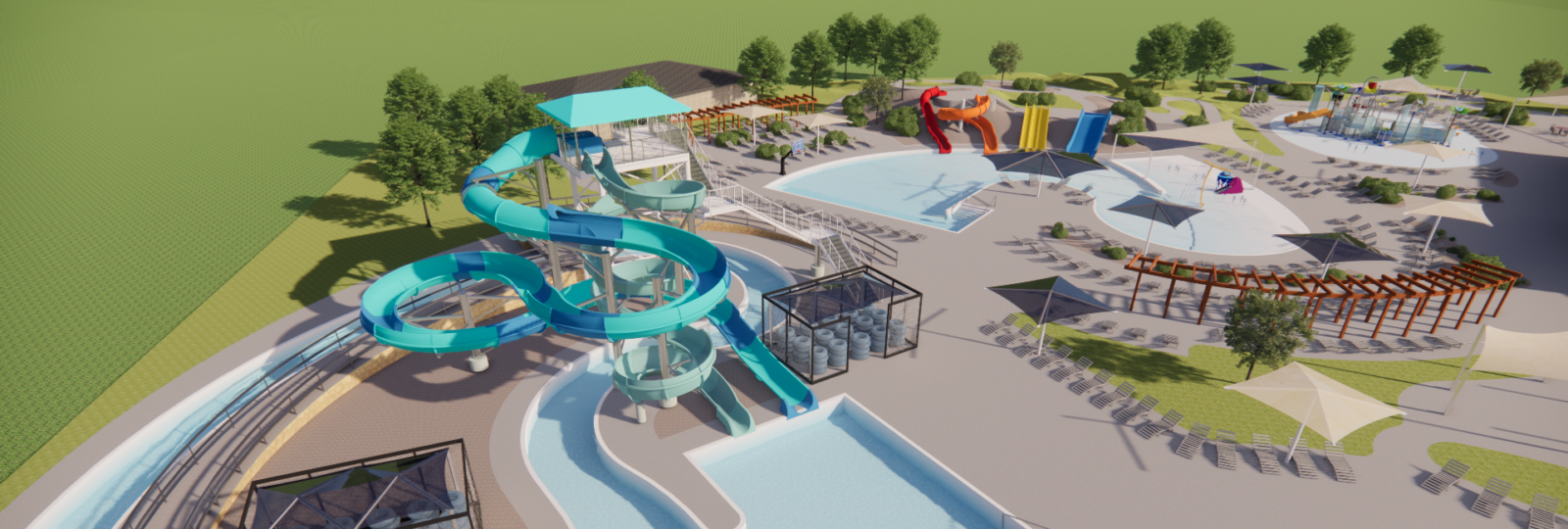Waukee Aquatic Center Plans Sink: What Next?
Share this story

A proposed aquatic center for the city of Waukee was included on the ballot on November 5, 2024’s election. Despite receiving a majority of the vote, the referendum fell through, leaving questions about what could have been and what is next for a potential aquatic facility.
A Waukee aquatic center has been in high demand for years, yet the last official proposal was nearly fifteen years ago, in 2010. Since then, Waukee’s population has well over doubled, with, on average, seven people joining the community per day. This has created a demand for more family-friendly recreational facilities that could easily be accessed in town.
Research for drafting the most recent proposal took several considerations into account. One of the main considerations was the population of not only Waukee but the surrounding regions. As the region continues to grow, there is also a growing need for more immediately accessible facilities. Potential competitors like the Valley View, Holiday and Clive aquatic centers are only increasing in capacity each summer, with the distance also posing potential inconvenience.
As described by Waukee’s City Administrator, Brad Deets, “Today we are a community of 32,000 people, but I would argue that we are really a community of probably 50,000 people. Whether you live in the Waukee city limits or you live in the western portions of Clive, Urbandale [or] Des Moines, a lot of residents still feel like they are a part of the Waukee community.”
Another consideration was the location. With the size of the facility, it would require about five to ten acres for both the facility itself and the parking lot. Its location was uniquely positioned to be a part of the upcoming 11th St. and Civic Campus. This campus would serve as the center of the growing Waukee community and would expand to include other amenities. Despite the aquatic center proposal following through, plans for the campus will move forward and the purchased land is still owned by the City of Waukee.
The third major consideration was public input. There were approximately 1,500 respondents to an online survey gauging interest, with the feedback being implemented into the proposal. Based on the public forum, the main focus of the facility was appealing to families. Several parts of the center were separated by age, allowing for spaces for both young children and adults.
Deets stated, “As an example, this proposal had a very large lazy river since that was the number one thing that the public responded to. It included several areas of water slides based upon age levels, and included some areas where you could separate off and have private events, to create some separation between older teenagers and adults and then the young kids.”
A major appeal of the center was the prospect of new jobs for teenagers in the Waukee area. There would have been one pool manager, one lead lifeguard and around twenty-three lifeguards on shift per day.
Northwest senior Hudson Otis, a lifeguard and member of the Varsity Boys Swim Team, expressed, “A [Waukee] aquatic center would be closer than most of [the other facilities]. I would not have to go all the way out to Clive or the further ones, but if we had one here, it would be easier to get to, closer for jobs.”
However, there were major drawbacks to the proposal. The project would have been expensive, with around $33 million needed to fund it—over four times the 2010 proposal, which needed only $8 million. It would have also raised the annual property tax by about $119, even for those who would never use the facility.
Junior Ellie Kazsubowski, a lifeguard at the Clive Aquatic Center, conveyed, “I would be interested in Waukee having its own aquatic center. I know a lot of parents will not agree, but it’s not really about them, it’s about the kids. And as a lifeguard, I get to see those kids’ faces light up when they come to the pool. I would no longer have to drive 20 to 30 minutes to get to work. I would have the opportunity to get to know more people that I might have never met even though we might go to the same school.”
For a majority of Waukee residents, the benefits seemed to outweigh the negatives, receiving a majority vote in favor with 54.9%. Yet, the bill did not go through. Similar to referendums for building a new school or the recent natatorium, a supermajority of at least 60% is needed to pass. With a difference of only about 800 votes, the proposal fell through.
That does not mean an aquatic center will never happen, though.
“I am cautiously optimistic that this will be back at some point in the future. Long-term Waukee is probably a community of sixty to seventy thousand people, so we’re about halfway there,” Deets reflected. “Primarily, people are using the aquatic facility in West Des Moines as well as the one in Clive. As this area continues to grow, the ability to get into those facilities will get harder and harder as there’s more people trying to get in. At some point, people are gonna say, we can’t even use the facilities in place today, it’s time to build a new one.”
As the Waukee community continues to expand, features and activities like an aquatic center become more in demand. While it is not moving forward now, the space saved for it is still there in the heart of Waukee, and the concept will continue to float in the minds of the city’s residents.
